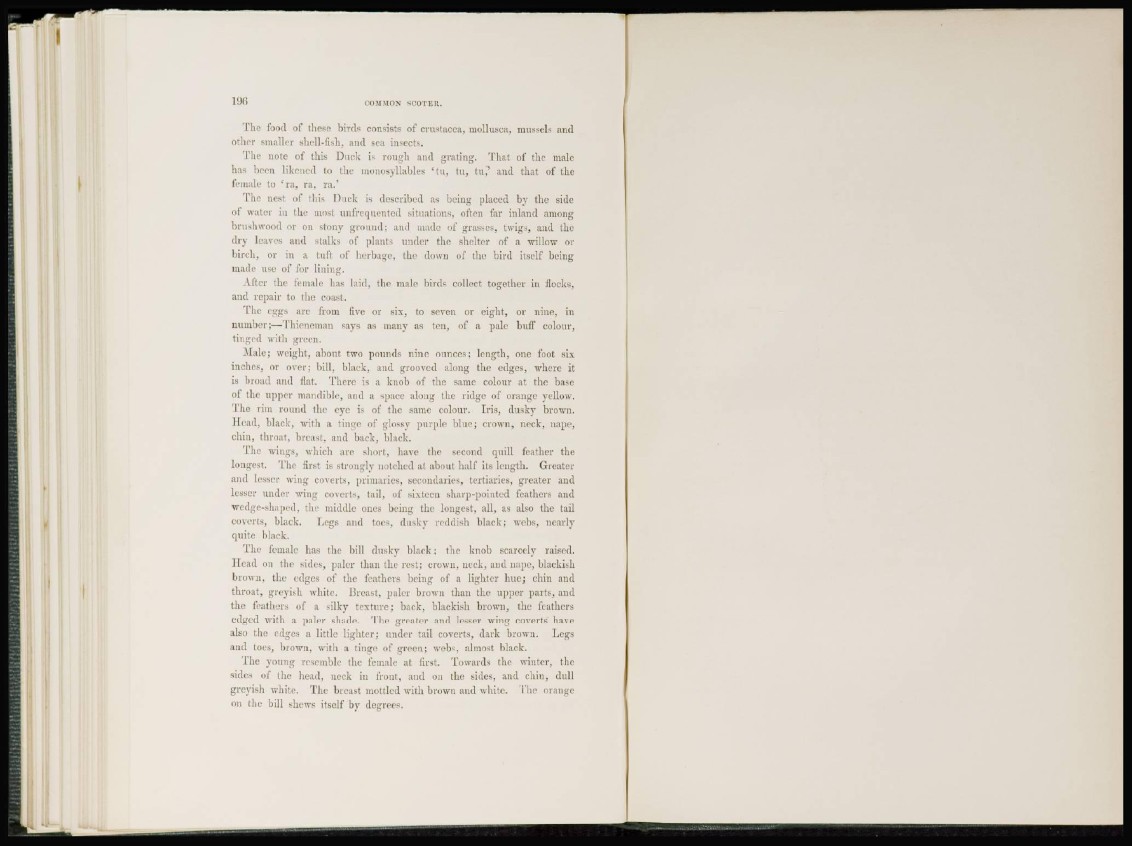
L96 COMMON SCOTER.
The food of those, birds consist-- of Crustacea, mollusca, mussels and
other smaller shell-fish, and sea insects.
The note of this Duck is rough and grating. That of the male
has been likened to the monosyllables ' t u , tu, tu7 and that of the
female to ' r a , ra, ra.1
The nest of this Duck is described as being placed by the side
of water in the most unfrequented situations, often far inland among
brushwood or on stony ground; and made of grasses, twigs, and the
dry leaves and stalks of plan Is under the shelter of a willow or
birch, or in a tuft of herbage, the down of the bird itself being
made use of for lining.
After the female has laid, the male birds collect together in nocks,
and repair to the coast.
The e<rgs arc from five or six, to seven or eight, or nine, in
number;—Thieneman says as many as ten, of a pale buff colour,
tinged with green.
Male; weight, about two pounds nine ounces; length, one foot six
inches, or over; bill, black, and grooved along the edges, where it
is broad and flat. There is a knob of the same colour at the base
of the upper mandible, and a space along the ridge of orange yellow.
The rim round the eye is of the same colour. Iris, dusky brown.
Head, black, with a tinge of glossy purple blue; crown, neck, nape,
chin, throat, breast, and back, black.
The wings, which are short, have the second quill feather the
longest. The first is strongly notched at about half its length. Greater
and lesser wing coverts, primaries, secondaries, tcrtiaries, greater and
lesser under wing coverts, tail, of sixteen sharp-pointed feathers and
wedge-shaped, the middle ones being the longest, all, as also the tail
coverts, black. Legs and toes, dusky reddish black; webs, nearly
quite black.
The female has the bill dusky black; the knob scarcely raised.
Head on the sides, paler than the rest; crown, neck, and nape, blackish
brown, the edges of the feathers being of a lighter hue; chin and
throat, greyish white. Breast, paler brown than the upper parts, and
the feathers of a silky texture; back, blackish brown, the feathers
edged with a paler shade. The greater and lesser wing coverts have
also the edges a little lighter; under tail coverts, dark brown. Legs
and toes, brown, with a tinge of green; webs, almost black.
The young resemble the female at first. Towards the winter, the
sides of the head, neck in front, and on the sides, and chin, dull
greyish white. The breast mottled with brown and white. The orange
on the bill shews itself by degrees.